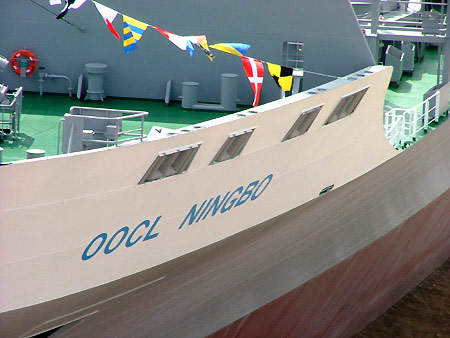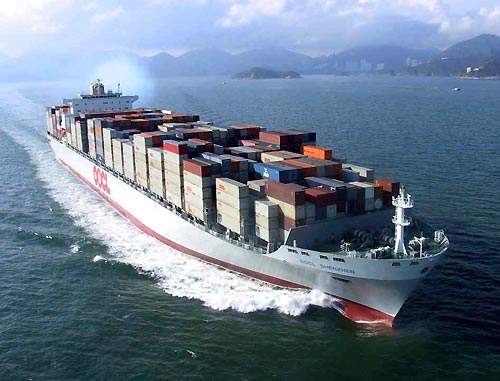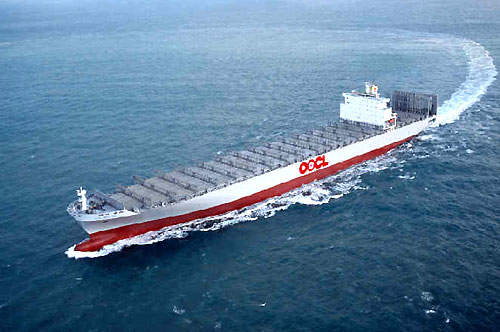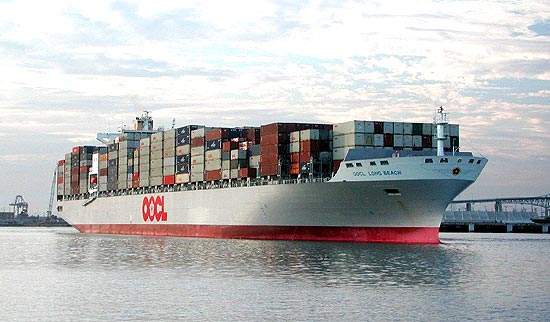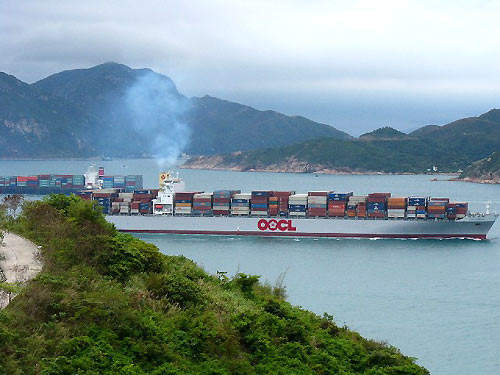The OCCL Ningbo is the sixth in a series of 12 container vessels built by Samsung Heavy Industries for Orient Overseas Container Line. Several vessels in the series are already built: OOCL Shenzhen, OOCL Long Beach, OOCL Quingdao, OOCL Rotterdam and OOCL Hamburg. There are plans for four vessels to be delivered in 2005 and last two to be delivered in 2006.
The OOCL Ningbo is 323m long, 308m between perpendiculars, and 42.8m wide. The depth to the main deck is 24.6m and it has a design draught of 13m (14.5m scantling draught). It has a gross tonnage of 89,000gt and registers a design deadweight of 82,2000dwt.
SX CLASS VESSELS
These container carriers are advanced ‘SX’ class vessels, boasting the largest declared capacity in the world, at 8,063 TEUs. They are also the largest vessel ever built by Samsung Heavy Industries.
The new generation SX-class vessel is designed with many environmentally-friendly features including specially designed hull which allows the vessel to consume less fuel while maintaining a very high speed of 25 knots per hour. The vessel is also designed to burn low sulphur fuel with much reduced SOx gases emission to the environment. Tin-free SPC paint is used to reduce toxicity to marine life.
The design has a double hull arrangement, with the side, bilge and three transverse bottom tanks being used for water ballast and bunker capacity. Heel adjustment is provided by two side tanks, with a heeling pump linked to an automatic system being used for transferring the ballast water across.
CONTAINER CAPACITY
There are nine holds – one aft of the deck house, and eight forward. The lift-on, lift-off pontoon hatch covers were provided by MacGreggor.
It can accommodate containers of 20ft, 40ft and 45ft, and heights of 8ft 6in and 9ft 6in. The vessel can carry 3,715 TEU in the holds and another 4,348 units on deck, giving a total of 8,063. There are also 700 refer plugs.
In the holds, the units are laid out in nine tiers and 15 rows, whereas on deck they are arranged in seven tiers and 17 rows. Refrigeration in the hold is carried out by a vent fan system. The SASS21 cargo control system is made by Samsung. The ship’s boiler is an OEV-700-24x unit manufactured by Osaka, with an output of 7t/hr.
ACCOMMODATION AND WHEELHOUSE
The accommodation block is arranged over seven tiers. It houses the crew of 28 although there is also space for a repair team as required. Above this is the wheelhouse. This contains a range of equipment including three JRC radars and a JRC JAN-3598 integrated bridge system.
In case of fire, there is a Saracom Sectional type T 1016 fore detection unit. In the holds, there is an NKCO2 cblanket system while there is a CO2 and seawater spray system in the engine rooms.
PROPULSION, MANOEUVRING AND POWER
The main engine is a MAN B&W 12K98MC-C design, manufactured by HSD Engine. It is capable of generating an output of 68,520kW with a rotary speed of 104rpm. The main engine drives a six-bladed propeller to produce a speed of 25 knots. The propeller is a fixed pitch Nickel Aluminium Bronze type 4 unit, designed and manufactured by Mitsubishi Heavy industries. It has a diameter of 8.8m. The main engine also drives a 3,000kW Taiyo SIGW 135-18 alternator.
In addition, there are four gensets, comprising Daihatsu 8DK-32C engines with an output of 4,297bhp, driving Taiyo HEW 70C-10 alternators, each with an output of 3,000kW.
The vessels are classified by the American Bureau of Shipping under the notation ABS +A1(E) Container Carrier, +AMS, +ACCU’ SH, UWLLD, CSC, NIBS

